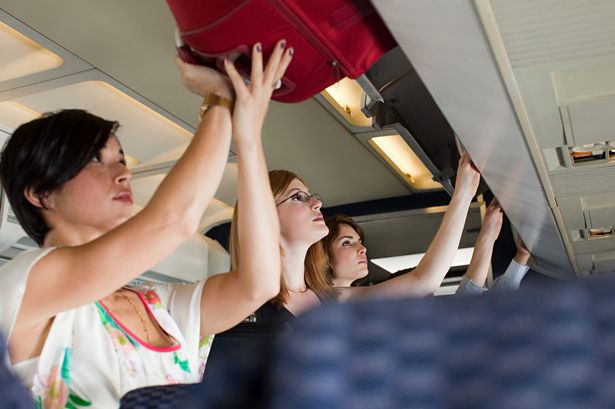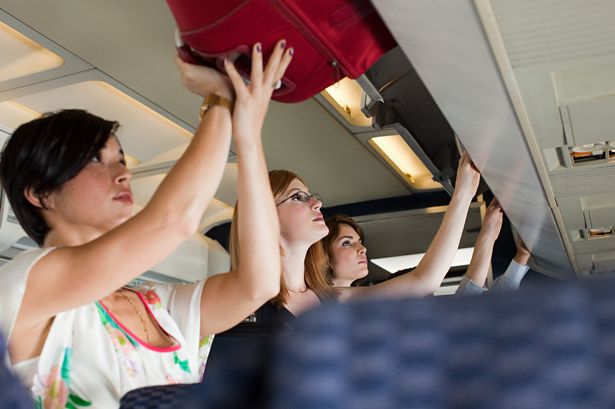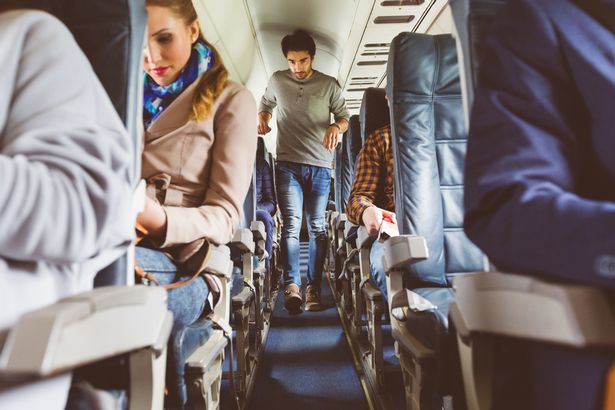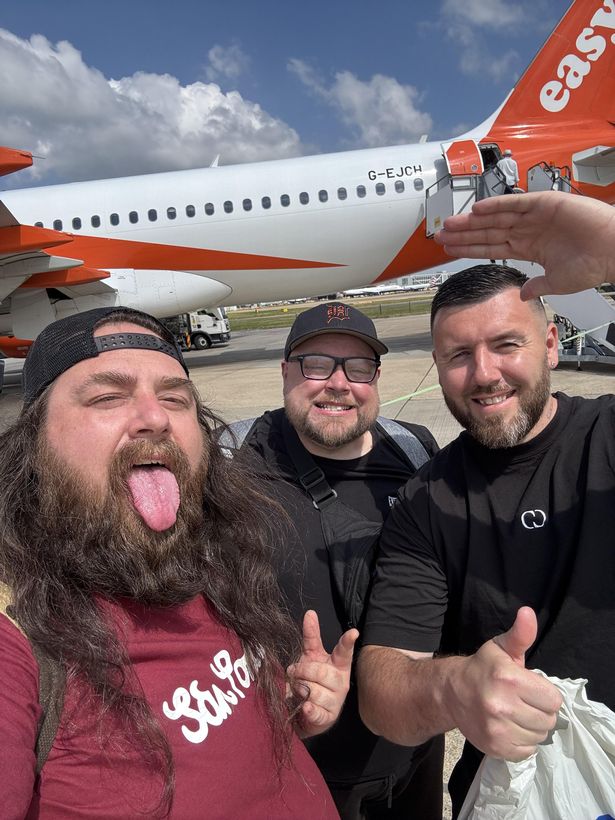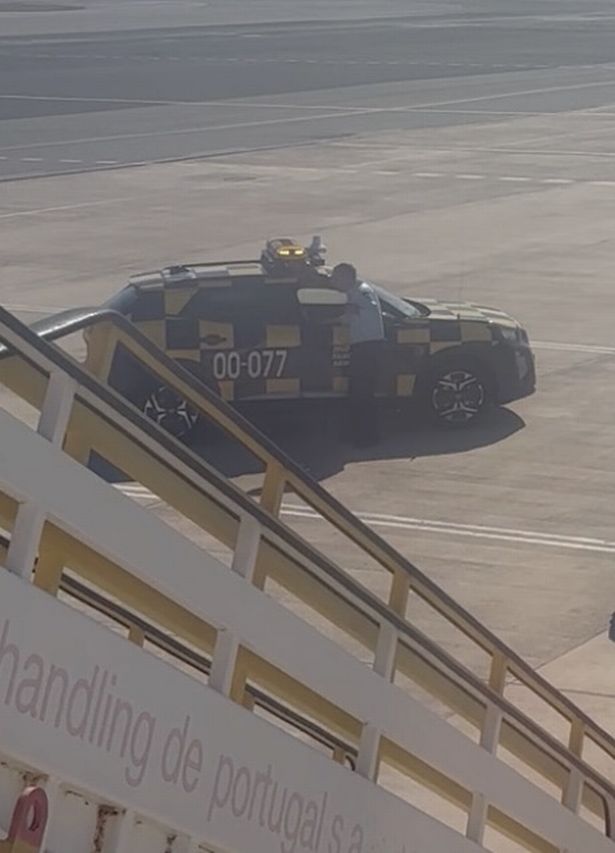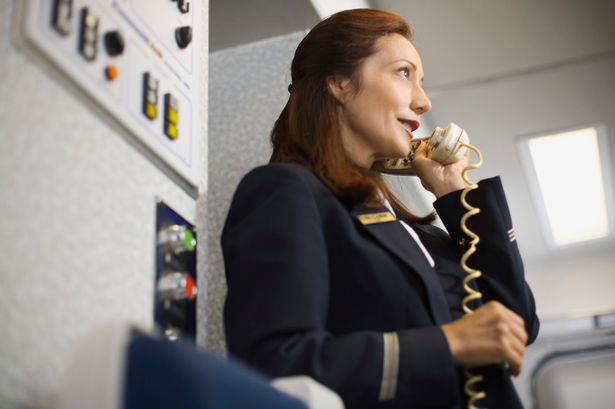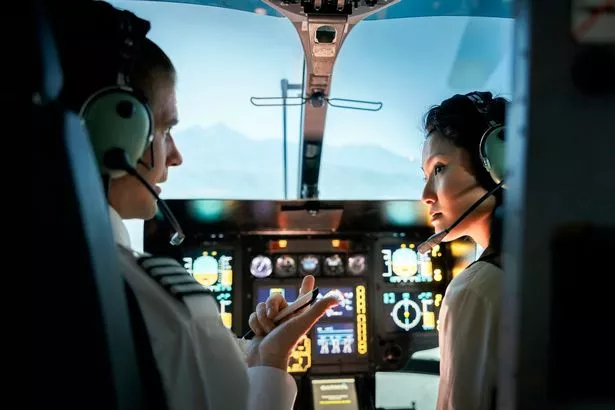Passengers on a recent easyJet flight were guided by cabin crew through an impromptu stretching session, but beyond entertainment there is a vital reason this is becoming a common practice
Passengers on a recent easyJet flight were subject to an impromptu ‘air-robics’ class. A viral TikTok video shows a plane-full of passengers stretching their arms and touching their knees at the direction of a cabin crew member.
The TikTok video has been viewed over 2 million times and was shared with the caption: “What in the air-robics is going on, easyJet”. While the synchronised stretching may look quite odd, one expert has shared that the practice is critical while flying.
While doing yoga stretches on an airplane may sound like a hassle, it’s become quite the trend. Videos are circulating online of flight attendants leading passengers through seated yoga routines mid-flight.
READ MORE: Brits warned to stop adopting common sitting position on flightsREAD MORE: Pilot’s wife shares the only two neck pillows she recommends for long flights
Weighing in on the movement, yoga instructor Holly Hogan says the practice supports circulation onboard and reduces nerves.
Partnering with Well Pharmacy Online Doctor, Holly Hogan, also shares expert-backed advice on in-seat yoga stretches, discreet breathing techniques, and strategies for beating jet lag to improve passenger comfort and wellbeing at 30,000 feet.
Holly says even minimal movement during long-haul travel can make a big difference. “Just five minutes of gentle stretching every couple of hours can help reduce tension in the neck, back and legs and lower the risk of circulation issues like deep vein thrombosis (DVT).”
While it’s important to stretch your legs by walking up and down the aisle, Holly says there are some beginner-friendly ways to stretch in your seat too.
“Even with limited space, there are simple yoga stretches you can do to stay comfortable and grounded. Try a seated cat-cow by gently arching your spine as you inhale and rounding your spine as you exhale. Add in some neck rolls, shoulder shrugs, and ankle circles to release tension and improve circulation.”
Holly recommends a “seated spinal twist” as well, which is not only great to ease stiffness in your back but aids with digestion. A great stretch to try after you’ve gotten through your inflight meal. Knee hugs are also great to loosen the lower back.
When you do stand up to stretch your legs or use the bathroom, there are a few other discreet poses you can attempt. “Mountain pose is a great one: just stand tall, ground your feet, and lengthen your spine,” Holly says. “A gentle forward fold can release your lower back, and calf raises are perfect for circulation. Even a standing quad stretch or lunge, if you have space, can prevent stiffness.”
For those who feel anxious while flying, Holly recommends focusing on breathing to calm down. “If you’re feeling anxious, one of my favourite techniques is box breathing: inhale for four counts, hold for four, exhale for four, and hold again for four. If you can, extending your exhale – for example, inhale for four and exhale for six or eight, will help to calm your nervous system.”
Everyone should be moving or stretching every one to two hours during a long flight, according to Holly. This includes walking the aisle, doing standing poses or just stretching while seated.
“It doesn’t have to be a full routine – just enough to keep your body from stiffening up,” she says. She also says it’s vital to combine gentle stretching with good hydration.
“Drinking water supports good circulation and prevents dehydration, while conscious breathing keeps your mind calm,” she concludes. “Add in a few stretches and a guided meditation, and you’ll land feeling much more refreshed.”
